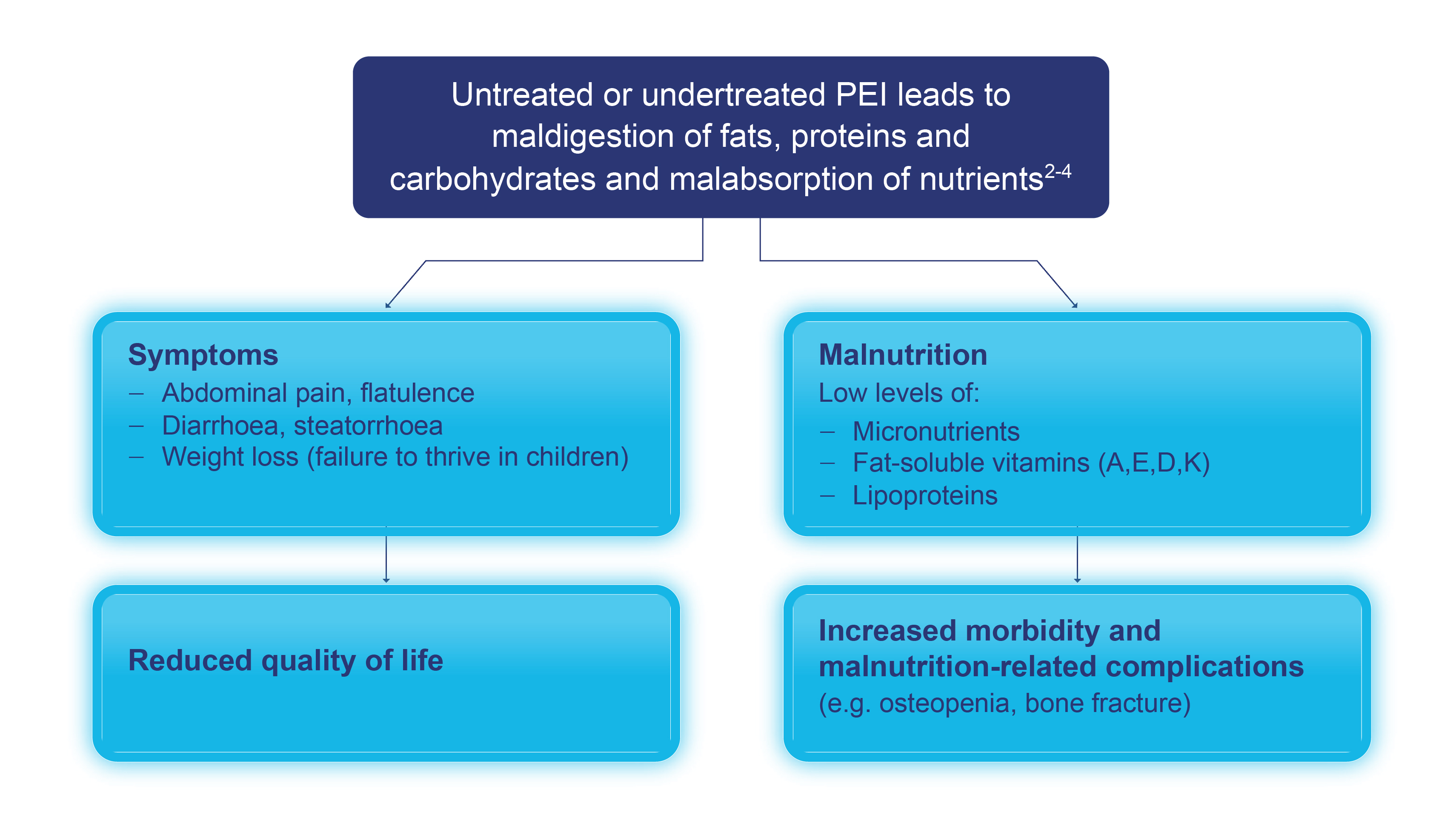Creon®
Signs and Symptoms
The Pancreas 1
The pancreas produces enzymes (e.g. lipase, amylase, trypsin and chymotrypsin) and bicarbonate, both of which are important for macronutrient digestion.5 These secretions enter the second portion of the duodenum via the pancreatic duct following mediation by hormonal and neuronal mechanisms.6
The healthy pancreas releases around 720,000 lipase units in response to a 300-600 kcal meal, with ~10% needed to maintain normal digestion.7
Untreated or undertreated PEI can have serious consequences for patients2-4

Abbreviation: PEI = Pancreatic Exocrine Insufficiency
References
- Zhou Q, et al. Pancreas regeneration. Nature. 2018 May;557(7705):351-358.
- Sikkens EC, et al. J Gastrointest Surg 2012; 16: 1487-92
- Kuhlmann L, et al. JOP J Pancreas (Online) 2018; 19(4): 183-89
- Nikfarjam M, et al. MJA 2017; 207(4):161-65
- 2015 Australasian Pancreatic Club. Australasian guidelines for the management of pancreatic exocrine insufficiency. https:// static1.squarespace.com/static/5b5e94e7aa49a1a136248110/t/5db0c976c894034e9ce620b8/1571867020139/ APC+Guidelines+on+PEI.pdf
- Brennan GT, Saif MW. Pancreatic Enzyme Replacement Therapy: A Concise Review. JOP. 2019;20(5):121-125.
- Keller J, Layer P. Human pancreatic exocrine response to nutrients in health and disease. Gut. 2005 Jul;54 Suppl 6(Suppl 6):vi1-28
CREON® (Pancreatic Extract). Modified release capsules: General Sale (10,000 IU lipase) & Prescription Medicine (25,000 IU lipase); Modified release granules: General Sale (Micro 5,000 IU lipase). Indications: For treatment of conditions associated with pancreatic exocrine insufficiency (PEI), such as: cystic fibrosis (CF), chronic pancreatitis, post-pancreatectomy, post gastrointestinal bypass surgery, ductal obstruction of the pancreas or common bile duct. Contraindications: Hypersensitivity to porcine protein or to any of the excipients. Precautions: Fibrosing colonopathy, pregnancy, lactation. Adverse Effects: Abdominal pain, nausea, vomiting, constipation, diarrhoea, abdominal distension, rash, pruritus, urticaria. Dosage & Administration: The dose required depends on the severity of disease and the composition of food. It is recommended to take the enzymes during or immediately after each meal or snack. Always ensure adequate hydration of patients to avoid constipation. The capsules should be swallowed intact however when swallowing of capsules is difficult, the capsules may be opened and the minimicrospheres added to acidic soft food such as apple sauce, yoghurt or fruit juice with pH < 5.5, or taken with liquid such as fruit juice with pH < 5.5, e.g. apple, orange or pineapple juice. Rinse mouth out afterwards to ensure no product is retained in the mouth. Treatment of adult patients with PEI associated with nonCF conditions – Required dose for meals: 25,000 to 80,000 lipase units; Snacks: half of meal dose. Refer to data sheet for dose titration considerations. Treatment of paediatric and adult patients with CF - Children < 4 years: Starting dose of 1,000 lipase units/kg bodyweight per meal; Patients ≥ 4 years: Starting dose of 500 lipase units/kg bodyweight per meal. For CF patients, maximum dose of 4,000 lipase units/gram dietary fat intake. Creon® is a fully funded medicine. Before recommending this medicine, please refer to the full Data Sheet available from www.medsafe.govt.nz. Creon® is a Viatris company trade mark, Viatris Limited, Auckland. CRE-2023-0643. TAPS DA 2303MM-0712.